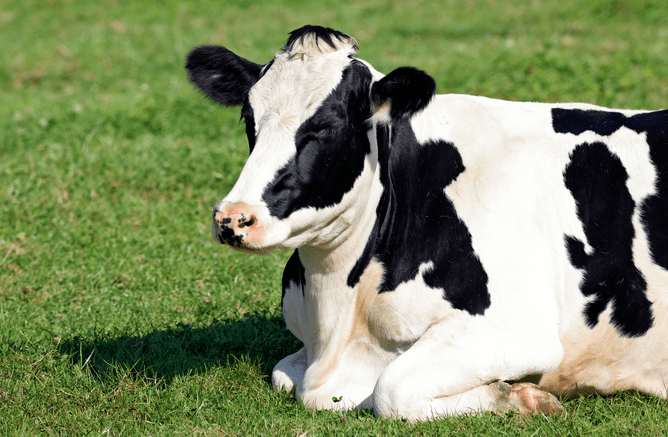A farmer’s worst nightmare can be showing up to a paddock and seeing sick cows lethargic and not wanting to get up. There are many things that can cause a cow to go down, including the below:
Toxic conditions:
Acute toxic mastitis
Metritis
Acidosis
Nitrate toxicity.
Metabolic issues:
Hypocalcaemia (Milk fever)
Hypophosphataemia
Hypomagnesaemia
Fatty Liver Syndrome.
Generalised weakness:
Emaciation (e.g. Liver Fluke, Johne’s disease, starvation)
External or internal haemorrhage (e.g. abomasal ulceration, liver abscesses)
Exhaustion (e.g. Prolonged calving difficulty, obesity)
Hypothermia.
Musculoskeletal conditions:
Fractures
Dislocations
Muscular ruptures/bruising.
Nervous conditions:
Ryegrass staggers
Calving paralysis
Brain abscesses.
Abdominal diseases:
Bloat
Twisted gut
Intussusception (telescopic gut).
When you find a down cow, take into consideration the following steps to give the animal the best chance:
Safety first
The very first, and absolutely critical, thing you should consider is your own safety. Cows are heavy, strong, heavy, unpredictable and especially heavy! Sick cows on the brink of death may be in pain and not want to be touched. They may also be found in unpredictable circumstances, such as stuck in drains or ditches. You cannot help the animal if you get injured yourself, so, take a step back, read the situation, understand the hazards and think of your own safety.
Early intervention
Early treatment is key to improving the chances of survival of any animal. The faster we can get the cow healthy, the better. Talking to a vet on the phone and giving them a thorough history can provide you with key advice, with medical recommendations for your cow’s specific conditions, to help keep the cow alive.
Give the cow the best chance - don’t hesitate and treat early!
A sick cow may have many diseases causing it to be down and be even more difficult to treat when a diagnosis can change the longer the cow is on the ground. The primary cause (see the list above) may be cured, however, a 500kg cow lying on one leg for long periods of time (3-6 hours) can suffer from compartment syndrome, which causes swelling and ischaemia (blood flow/oxygen restriction), leading to the muscles and nerves to lose function. Pneumonia and mastitis are also secondary features of a cow being down too long.
Get the cow upright
A cow on its side is not a good sign. Even worse if she is upside down!
Gas from the rumen rises to the highest point (i.e. the oesophagus) and exits out of the mouth through burping. This gas can get trapped and build up inside the rumen if the animal is not upright, causing bloat and putting pressure on the organs.
Lift the cow on hip lifters, if possible, but also use a chest strap. It is best to lift her over 3-4 sessions per day and only for a few minutes - don’t leave her hanging! Keep in mind the previous consideration and if you are rolling the cow over, or putting her into the correct position, remember, safety first!
Nurse your cow
Have two main goals in mind when treating a sick cow:
Support the cow until she can stand,
Prevent secondary damage.
If the cow is not nursed well, the treatment will not work.
Keep her warm and dry and sheltered from adverse weather (in a shed, if possible). Rotate her every 3 hours and put her on a soft surface. Deep straw, hay or shavings work best and, ideally, greater than 30cm deep, as the heavy cow will pack it down thinner.
This will reduce any muscle damage the cow will suffer from being down and give her a higher chance of standing up again.
Finally, ensure she has access to food and fresh water and confine her with gates or hay bales to prevent her from crawling (as dragging herself will also do more muscle damage)!

